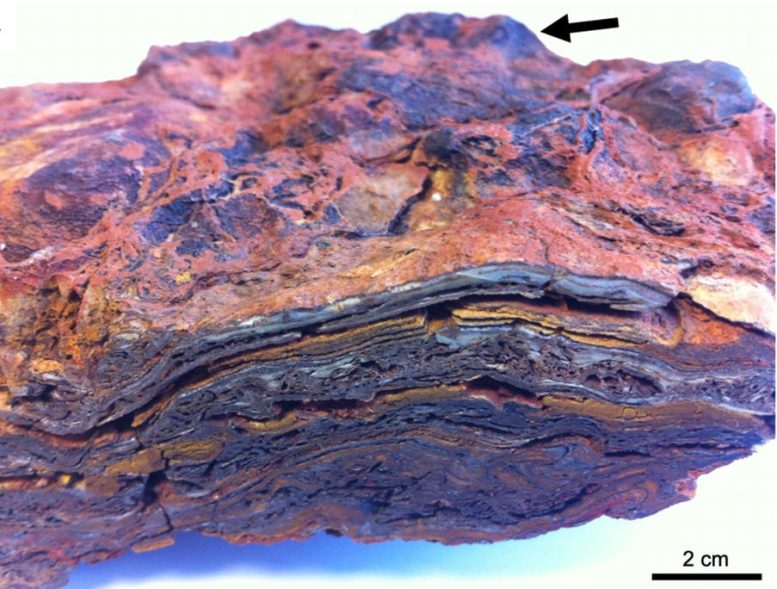
Hand sample of Dresser Formation stromatolite, showing a complex layered structure formed of hematite, barite, and quartz, and a domed upper surface (dome arrow). Credit: Keyron Hickman-Lewis and colleagues
Advanced 2D-3D insights into Earth’s oldest stromatolites.
The oldest morphological traces of life on Earth are sometimes very controversial, both because non-biological processes may generate relatively similar structures and because such fossils have frequently been subjected to advanced alteration and metamorphism.
Stromatolites, layered organo-sedimentary structures that reflect complex interactions between microbial communities and their environment, have long been regarded as crucial macrofossils for detecting life in ancient sedimentary rocks; however, the biological origin of ancient stromatolites has been extensively disputed. A paper recently published in the journal Geology of the Geological Society of America (GSA) combines a variety of advanced two- and three-dimensional analytical techniques to determine the biological origins of Earth’s earliest stromatolites from the 3.48-billion-year-old Dresser Formation in Western Australia.
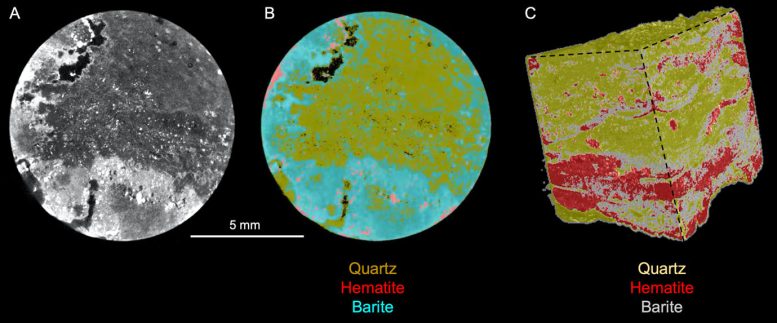
Three-dimensional rendering of stromatolite microstructure, enabling the distribution of phases throughout the structure of the stromatolites to be visualized. Credit: Keyron Hickman-Lewis and colleagues
Despite the fact that these stromatolites have undergone severe diagenesis and weathering and do not contain any organic materials, a team led by Dr. Keyron Hickman-Lewis of the Natural History Museum, London, has used optical and electron microscopy, elemental geochemistry, Raman spectroscopy, and laboratory- and synchrotron-based tomography to identify a number of characteristics suggestive of a biological origin.
In addition to performing laboratory tomography of 3D stromatolitic macrostructure, the team was able to achieve the first sub-micron pixel and voxel sizes for imaging of Precambrian stromatolite microstructures via phase contrast imaging using the SYRMEP beamline at the Elettra Synchrotron, Trieste, Italy. This enabled the identification of non-uniform layer morphologies, void spaces arising from the degassing of decaying organic materials, and pillar-like vertical structures interpreted as microbial palisade structures, a common indicator of phototrophic growth.
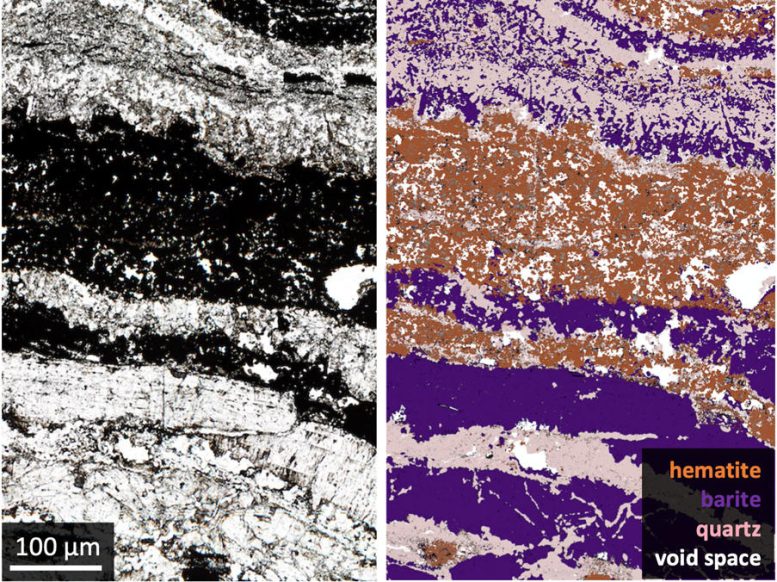
Optical photomicrograph (left) and EDX map (right) showing primary and replacement mineralogy in undulatory laminations of the Dresser Formation stromatolites. Credit: Keyron Hickman-Lewis and colleagues
The Dresser Formation stromatolites have been mostly replaced by hematite (iron oxide) due to recent weathering. While this renders organic geochemical analyses impossible, this composition is highly relevant for the search for life on Mars.
Sedimentary rocks at the surface of Mars have been subjected to similar pervasive oxidation and also comprise mostly iron oxides in their upper centimeters to meters. In this regard, the Dresser Formation stromatolites may be uniquely relevant materials to inform us of a precise style of biosignature preservation expected on Mars. As the Mars 2020 Perseverance rover continues its exploration of the Jezero crater, we should search for morphological expressions of life resembling those identified in the Dresser Formation and prepare for advanced multi-technique analyses when Martian samples are eventually returned to Earth.
Reference: “Advanced two- and three-dimensional insights into Earth’s oldest stromatolites (ca. 3.5 Ga): Prospects for the search for life on Mars” by K. Hickman-Lewis, B. Cavalazzi, K. Giannoukos, L. D’Amico, S. Vrbaski, G. Saccomano, D. Dreossi, G. Tromba, F. Foucher, W. Brownscombe, C.L. Smith and F. Westall, 4 November 2022, Geology.
DOI: 10.1130/G50390.1

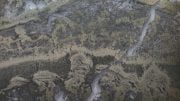
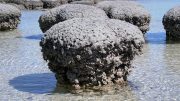
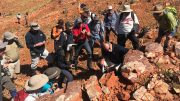

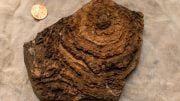



This is old news andvtge photograph is poor, at best. If you want to see good Stronatolites from Mars, SEE the photographs by Karl W. Schwab and Michael A. Smith on Researchgate. Stromatolites from the Stimson Formation posted in Nov. 2022 or writer the senior author
Nasa did find out Martian life long time ago.i did find Martian stromatolite bolder as meteorites over 6000 of them in iran..if you like to see them just have looking at may acuant in Pinterest…shahin1200.NASA lies about looking for life on Mars they looking for metals and fossil fuels and other things.